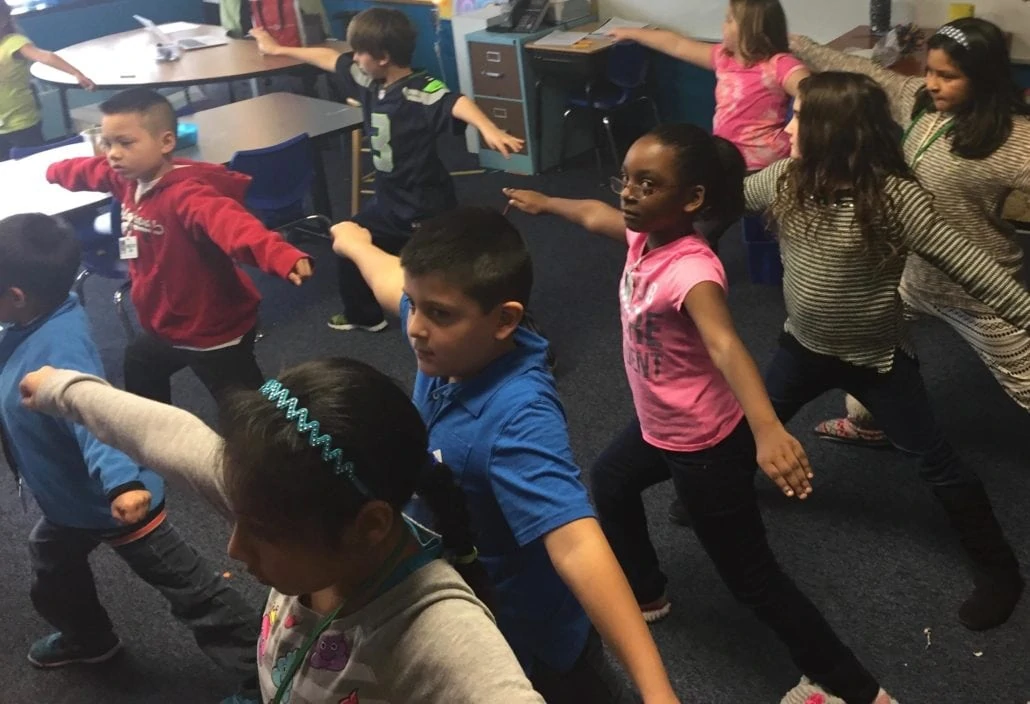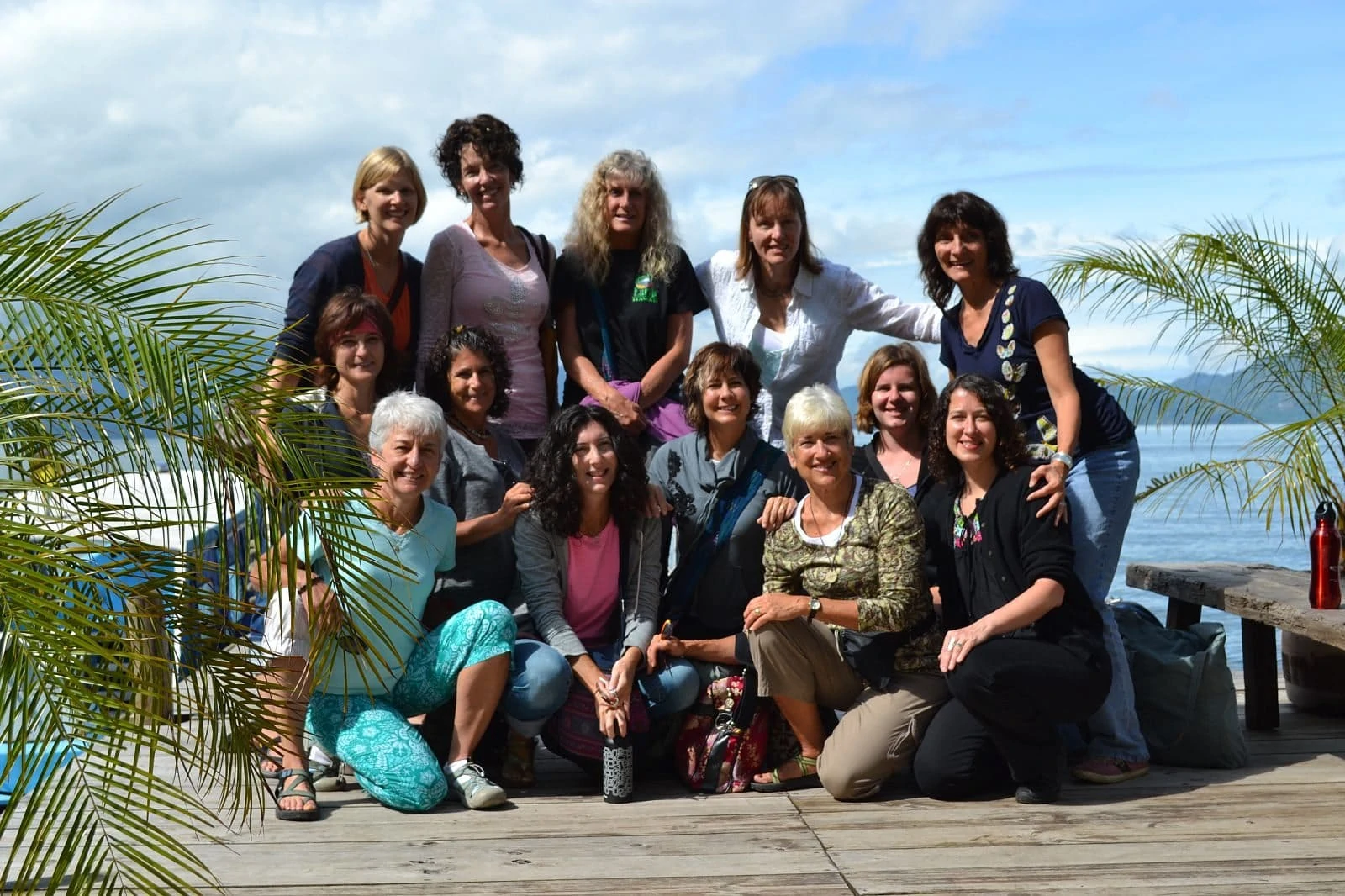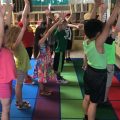Although summertime still means a lot of screen time for kids, a recent Pew Research Center survey delivered some great news: screen usage is down and physical activity is up.
But it also points to a challenge most every teacher faces once the new school year begins: The annual shift from active leisure time to being expected to sit at a desk for 6 or more hours a day.
Once you think about it in those terms, it’s easier to see how unrealistic that expectation can be.
Why Movement Belongs in the Classroom
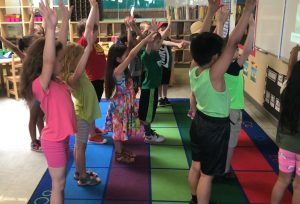
Indeed, science suggests that we evolved to learn best while we’re engaged in physical activity.
“As humans transitioned from a relatively sedentary apelike existence to a more physically demanding hunter-gatherer lifestyle, starting around 2 million years ago,” goes a prominent expression of this idea,
we began to engage in complex foraging tasks that were simultaneously physically and mentally demanding, and that may explain how physical activity and the brain came to be so connected.
“We think our physiology evolved to respond to those increases in physical activity levels, and those physiological adaptations go from your bones and your muscles, apparently all the way to your brain,” said [David] Raichlen, an associate professor in the UA School of Anthropology in the College of Social and Behavioral Sciences.
“It’s very odd to think that moving your body should affect your brain in this way — that exercise should have some beneficial impact on brain structure and function — but if you start thinking about it from an evolutionary perspective, you can start to piece together why that system would adaptively respond to exercise challenges and stresses,” he said.
Now consider what becomes possible when you combine that movement with the Yoga Calm Principles, student leadership, and social-emotional themes and processes that we uniquely combine. Granted, we’re biased, but we think it’s the perfect way to build community and safety at the start of the school year while also laying the foundations for optimal learning.
Activate…Educate…Integrate!
Using classroom movement strategically is also part of what we believe is the optimal learning approach, what we call the “Activate-Educate-Integrate” cycle. This brain-based learning and therapy approach uses physical movement and nervous system regulation techniques to prime the brain for cognitive instruction, and then uses relaxation and reflection activities to provide for integration of learned material and emotional processing.
This method, and the creation of safe and supportive learning and therapeutic environments, supports all learners.
Trauma Recovery & Mindfulness Need to Involve the Body
Are there children with trauma experiences in your class? Since stress and trauma reside in, and manifest through, the body’s physiology, trauma researchers like Bessel van der Kolk, MD and Bruce Perry, MD recommend body-based interventions such as yoga, repetitive movement and other forms of body awareness processes to release stress, regulate the nervous system, and develop a sense of safety and control.
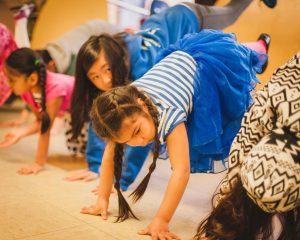
It’s hard to close your eyes and focus inward if you don’t feel safe.
Indeed, one of the limitations of popular mindfulness practices is that they tend to be overly focused on cognitive processes and treat the self in isolation, rather than recognizing the dynamic relationship between mind and body, let alone relationships between that self and the communities in which it dwells. It’s a problem that Yoga Calm is perfectly positioned to solve precisely because our principles-based approach is entirely unified.
It’s not mindfulness sometimes, movement sometimes, and SEL sometimes. It’s all of these at once.
As one excellent article recently put it, “Mindfulness isn’t meant to be spent in your mind.” Exactly. It’s meant to be spent in the body.
So why not try our whole child, brain-based education approach for your classes this year? Short, classroom movement breaks can be taught by anyone and help all students, reduce the need for interventions, and can count toward state physical activity requirements – a big bonus! Or play one of our EMPOWER video lessons, which are designed to get kids moving without jacking them up (a common complaint among teachers). More, those lessons teach kids the brain science behind the importance of movement, mindfulness, and SEL.
They show and teach how brain and body belong to each other, how it’s not just one or the other but, always, both.

